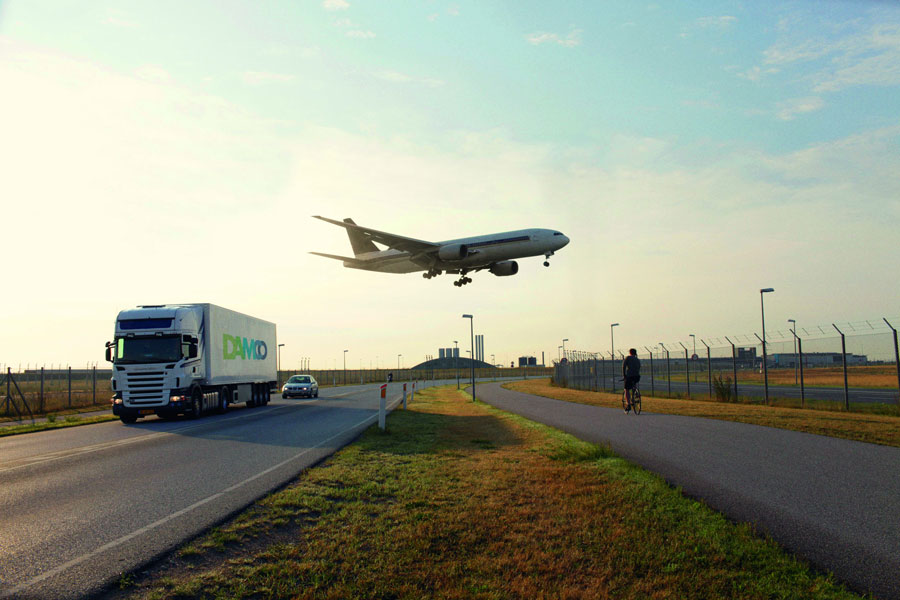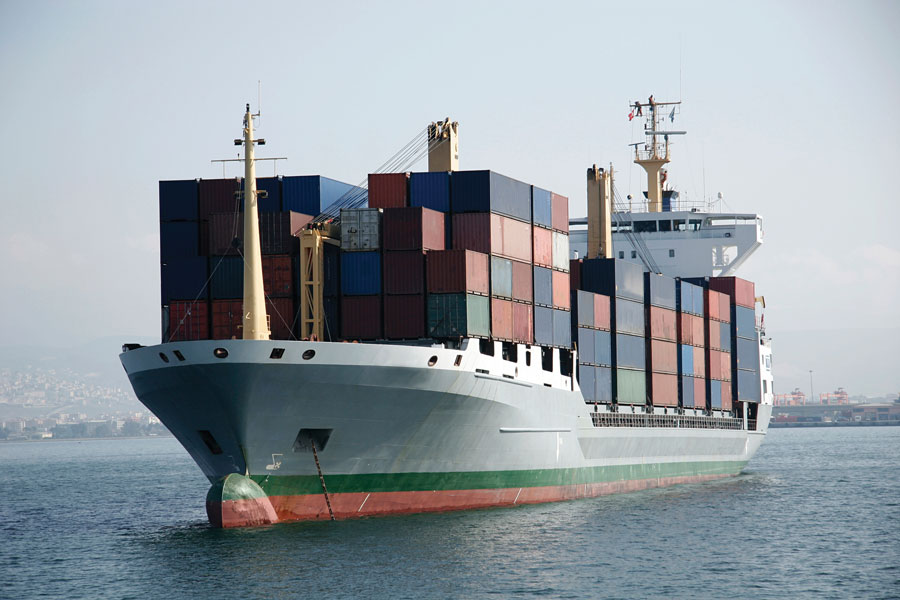Part of the Maersk Group, Damco is one of the world’s leading third party logistics providers. It specialises in delivering customised freight forwarding and supply chain solutions to its customers. The company has more than 300 offices located in over a hundred countries.
With extensive operations spread across the globe, Damco had a net turnover of USD 3.2 billion in 2014. It managed 2.9 million Twenty-Foot Equivalent Units of ocean freight and supply chain management volumes and airfreighted 190,000 tonnes.
Damco serves a wide variety of industries including retail, lifestyle, mining, chemicals and FMCG. The company’s customers range from large multinationals to small independent importers and exporters.
History
Damco’s history stretches back more than a century and is connected to the establishment of two new freight forwarding companies at that time. The first, the A.P. Møller Maersk Group was founded as a shipping company in 1904 in Svendborg, Denmark, by A.P. Møller and his father, P. Maersk Møller. A year later, in 1905 in Rotterdam, The Netherlands, the logistic company C.W.H. van Dam & Co started operations.
A hundred years later these companies merged to form the world’s leading third-party logistics providers, Damco International B.V. In 2010 Maersk Distribution Services Inc. in the USA was transferred into Damco and renamed Damco Distribution Services Inc.
Damco has grown through acquisitions and in 2011 bought the Chinese air freight forwarder New Times International Transport Service. A year later it acquired the Australian forwarder Pacific Network Global Logistics (PacNet).
Today the company manages and serves some of the most advanced supply chains in the world in a diverse range of industries. With decades of experience behind it and access to the latest advances in technology, Damco has developed the ability to make improvements in the operations of its customers. Amongst the benefits Damco’s clients derive are reduced inventories, lower operating costs and the knowledge that their supply chain is in the most competent hands.
Damco operations in Australia
The company has plans to expand its already substantial activities in the country. In 2016, it plans to increase its commercial team by about 40%. There is high demand for its services from both large global and growing local companies. The Australian operations of Damco are a strong representation of its logo, ‘Global Logistics, Individual Solutions’.
Customers find that Damco’s hands-on services and strategic solutions can be customised to meet every need they have. The company is capable of furnishing a competitive rate for an urgent shipment or act as a strategic partner who can identify and create short-term efficiencies for its clients.
With over 30 years of experience in the field, Damco Australia is ideally positioned to understand the customer’s business and devise the most efficient and appropriate solution. Every Damco office has local people who speak the local language and who are capable of providing clients with the most cost-effective solution.
In key origin markets, particularly China, the company has established its presence and offers holistic solutions to its clients. Previously many companies had large warehouses in Australia where their distribution, tagging and sorting activity was carried out.
Now a great deal of this is being done closer to the point of origin in the factories in Asia where labour is cheaper and from where it is easier to supply a global logistics operation. Damco has positioned itself to meet this changing environment and its proprietary technology and processes enable it to offer customers the most efficient solutions.
Kelvin Mason, Chief Commercial Officer – Damco, for Australia and New Zealand says, “We are basically an integral part of the customer’s business. If they have no goods arriving into their retail stores then they have nothing to sell. So the supply chain is probably the second-most important part of their business after their merchandise.
“When our customers place orders with their factories and vendors throughout the world they also send the orders to Damco. We then manage the factories and vendors to ensure that they comply with requirements for delivery. We can manage complex supply chains with up to a thousand vendors all throughout the globe.
“Our customers can make decisions during the supply chain process. So for example, if there are orders from one factory which require to be changed for delivery from Melbourne to Sydney, we can arrange that midstream through our systems. If they want any value-adds such as labelling or tagging, we can do that also.”
Airfreight
Damco is acutely aware of the fact that airfreight is an expensive option that should be used only if it is really necessary. There are many instances when a client holds the view that if a consignment is to reach its destination by a certain date, the only choice available to it is to despatch it by air cargo.
But Damco’s experience in managing supply chains can often devise a mix of air and sea transportation that provides a cost-effective alternative. The company has an extensive network of hubs that enables it to plan this effectively.
A number of airline carriers have long-standing arrangements with Damco. The company’s non-asset based operating style, where it does not own aircraft itself, allows it to get the best deal for its clients by having long term relationships with all major airlines.
It is important that an organisation’s buying, merchandising and logistics people talk the same language. Damco coordinates this exercise to formulate the right supply chain decision. The client has a single-point contact within Damco ensuring that up-to-date information is available and any changes in the transportation schedule can be tackled quickly and effectively.
“In our business there are two types of air freight clients,” says Kelvin Mason, “We have customers who use airfreight as an integral part of their supply chain. For example, we have customers in Hong Kong who have closed their warehouses in Australia, so we replenish their stores all around the country from our warehouse in Hong Kong.
“When the customer’s stores place an order, our warehouse is informed. We then arrange to pick the order and send it overnight by airfreight direct to the store. This is an example of a customer using airfreight as an integral part of its supply chain.
“Other customers don’t need airfreight unless it is an emergency. For example, a retail store may require stock in time for a launch. Then they would use airfreight. Airfreight is more of a backstop for these companies and is a necessary evil.”
Damco has developed several categories of services to meet transit time requirements of customers. Priority despatches consignments on the first available flight using partner airlines’ dedicated services. If goods are sent to a major destination, the transit time does not exceed two days.
Sending air cargo by Economy, is a cost-effective option as it uses one or more consolidations per week, depending on the point of origin. Consignments are usually delivered within five days. There are two Sea-Air facilities available. The first, Short Sea-Air, uses Damco’s unique hub solution in Malaysia. Here, the seaport-to-airport transit time is seven to ten days.
The second Sea-Air transportation solution is Long Sea-Air, which uses the company’s hub in Dubai. Here the seaport-to-airport transit time is 18-25 days. The fastest option is Air Charter. Damco arranges an aircraft through its network of international charter brokers to find the most economical and appropriate means to transport a client’s consignment.
Visibility Management
One of the biggest advantages Damco has are its strength in information management systems and automation of processes. These effectively manage daily operations, minimise errors and delays and provide real-time information to clients.
The company’s visibility solution is a single, web-based access point that provides end-to-end supply chain information. It includes order management, inventory management, reporting/business intelligence and integration of data from multiple partners in the supply chain.
Damco’s back-end system is the backbone of its operations. The platform was launched in 1992 and since then has undergone a series of upgrades and refinements that have made it extremely versatile and capable of handling the entire range of client requirements.
Electronic data interchange (EDI) and bar coding form an integral part of supply chain management. Damco manages more than 14 million EDI transactions a month on 1,500 different customer-specific requirements.
The company supports both standard and customised EDI solutions to transfer information electronically at numerous points during the shipment process. It also has extensive barcode scanning, printing and labelling capabilities.
Damco’s expansion plans
The company’s forte lies in working closely with its customers to understand their business and deliver the solution they need. It has specialised teams that have an expert level of knowledge in various verticals that include retail, lifestyle, technology, FMCG and is rolling out further products in the fast growing B2C sectors.
Damco has aggressive growth plans. “We are already in the emerging markets of Myanmar, Bangladesh and Vietnam,” says Kelvin Mason. “We already have a strong presence in the markets of Asia, Africa and South America.
“We have a dedicated supply chain design team who will sit with our customers on a regular basis and review the customer’s business as in where they are sourcing from, which factory they buy from and then we optimise their supply chain. We offer them the best value and speed to market.”
AT A GLANCE
WHO: Damco
WHAT: Damco is one of the world’s leading providers of freight forwarding and supply chain management services.
WHERE: VIC 3042, Australia
WEBSITE: damco.com






 This information will never be shared to third parties
This information will never be shared to third parties